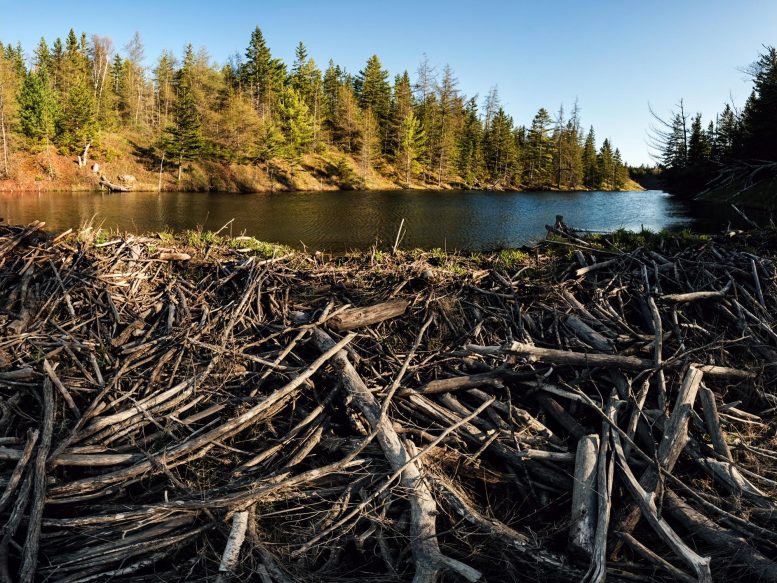
A new study finds that when it comes to water quality in mountain watersheds, beaver dams can have a far greater influence than climate-driven, seasonal extremes in precipitation.
As U.S. West warms, beavers will become a bigger boon to river water quality.
As climate change worsens water quality and threatens ecosystems, the famous dams of beavers may help lessen the damage, according to a new study by Stanford University scientists and colleagues.
The research, which will be published today (November 8) in the journal Nature Communications, reveals that beaver dams can have a far greater influence than climate-driven, seasonal extremes in precipitation when it comes to water quality in mountain watersheds. The wooden barriers raise water levels upstream, diverting water into surrounding soils and secondary waterways, collectively called a riparian zone. These zones act like filters, straining out excess nutrients and contaminants before water re-enters the main channel downstream.
This beneficial influence of the big, bucktoothed, amphibious rodents looks set to grow in the years ahead. Although hotter, arid conditions wrought by climate change will lessen water quality, these same conditions have also contributed to a resurgence of the American beaver in the western United States, and consequently an explosion of dam building.
“As we’re getting drier and warmer in the mountain watersheds in the American West, that should lead to water quality degradation,” said the study’s senior author Scott Fendorf, a professor of Earth system science at Stanford University. “Yet unbeknownst to us prior to this study, the outsized influence of beaver activity on water quality is a positive counter to climate change.”
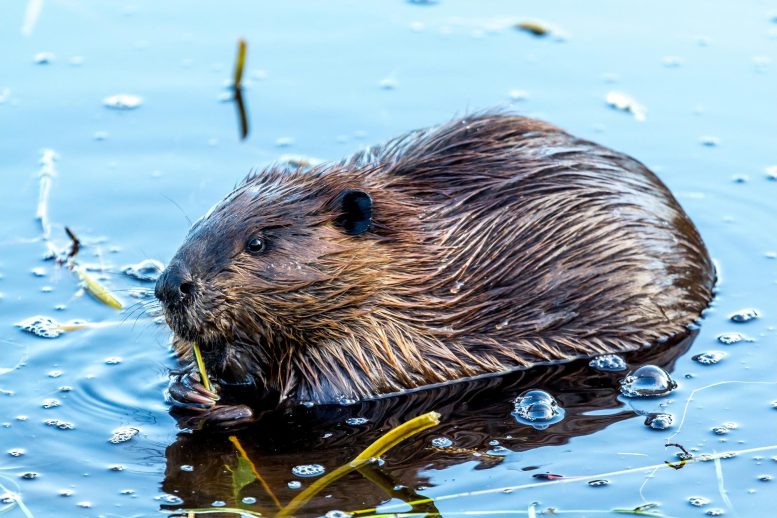
Beavers build dams and lodges using tree branches, vegetation, rocks, and mud. They are known to chew down trees for building materials. Beaver activity could help counter the damage from climate change on river water quality.
A lucky natural experiment
The discovery of the profound impact of beaver dams came about serendipitously. As a PhD student in Fendorf’s lab in 2017, lead study author Christian Dewey had started doing field work along the East River, a main tributary of the Colorado River near Crested Butte in central Colorado.
Initially, Dewey had set out to track seasonal changes in hydrology, and riparian zone impacts on nutrients and contaminants in a mountainous watershed.
“Completely by luck, a beaver decided to build a dam at our study site,” said Dewey, who is now a postdoctoral scholar at Oregon State University (whose mascot, incidentally, is a beaver). “The construction of this beaver dam afforded us the opportunity to run a great natural experiment.”
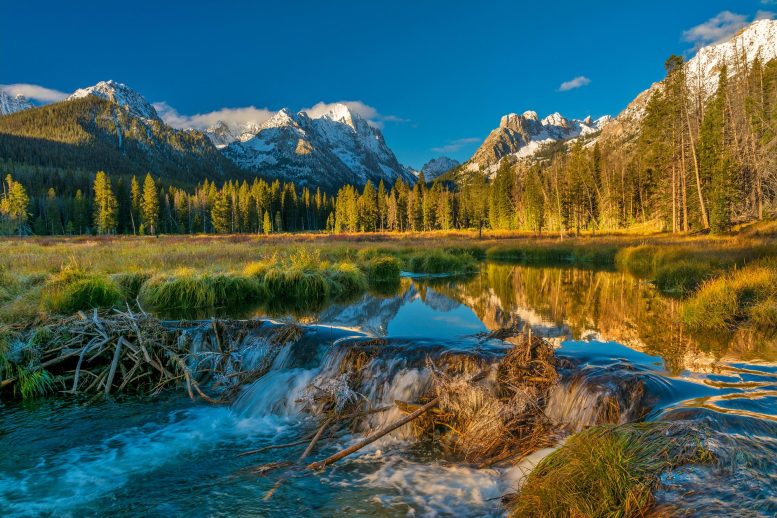
Beaver dams may help preserve water quality in mountain watersheds in the face of climate change.
Dams versus dry years and wet years
For the study, Dewey and colleagues reviewed data on water levels gathered hourly by sensors installed in the river and throughout the riparian area. The team also collected water samples, including from below the ground’s surface, to monitor nutrient and contaminant levels.
To understand how beaver dams may affect water quality in a future where global warming produces more frequent droughts and extreme swings in rainfall, the researchers compared water quality along a stretch of the East River during a historically dry year, 2018, to water quality the following year, when water levels were unusually high. They also compared these yearlong datasets to water quality during the nearly three-month period, starting in late July 2018, when the beaver dam blocked the river.
Water quality is a measure of the suitability of water for a particular purpose – ecosystem health or human consumption, for instance. During periods of drought, as less water flows through rivers and streams, the concentrations of contaminants and excess nutrients, such as nitrogen, rise. Major downpours and seasonal snowmelt are then needed to flush out contaminants and restore water quality.
Through their measurements and computer modeling of the interlinked biological, chemical, and physical processes that affect how contaminants become concentrated or flow downstream, the researchers found that the beaver dam dramatically increased removal of nitrate, a form of nitrogen, by creating a surprisingly steep drop between the water levels above and below the dam.
Warm, dry summers following spring snowmelt also produce big level changes, which generate a pressure gradient that pushes water into surrounding soils. The larger the gradient, the greater the flow of water and nitrate into soils, where microbes transform nitrate into an innocuous gas.
In the East River, the researchers found the increase in the gradient compared to an average day was at least 10 times greater with the dam than it was during the summer peak without the dam, for both the high-water year (2019) and the drought year (2018). Stated otherwise, the effects of the dam exceeded climatic hydrological extremes – in either direction of drought or abundant snowmelt – by an order of magnitude.
“Beavers are countering water quality degradation and improving water quality by producing simulated hydrological extremes that dwarf what the climate is doing,” said Fendorf, who is the Terry Huffington Professor in the Stanford Doerr School of Sustainability and a senior fellow at the Stanford Woods Institute for the Environment.
While in place, the beaver dam boosted removal of unwanted nitrogen from the studied East River section by 44% over the seasonal extremes. Nitrogen is an especially pernicious problem for water quality as it promotes overgrowth of algae, which when decomposed starve water of the oxygen needed to support diverse animal life and a healthy ecosystem.
The study is a reminder that as the future impacts of climate change are holistically assessed, feedback from changes in ecosystems must also be included.
“We would expect climate change to induce hydrological extremes and degradation of water quality during drought periods,” said Fendorf, “and in this study, we’re seeing that would have indeed been true if it weren’t for this other ecological change taking place, which is the beavers, their proliferating dams, and their growing populations.”
Reference: “Beaver dams overshadow climate extremes in controlling riparian hydrology and water quality” by Christian Dewey, Patricia M. Fox, Nicholas J. Bouskill, Dipankar Dwivedi, Peter Nico & Scott Fendorf, 8 November 2022, Nature Communications.
DOI: 10.1038/s41467-022-34022-0
Study co-authors are affiliated with Lawrence Berkeley National Laboratory.
This research was supported by the U.S. Department of Energy and the Rocky Mountain Biological Laboratory in Gothic, Colorado.

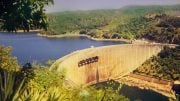
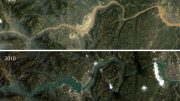

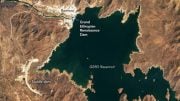




I agree with the author that beaver dams can significantly impact water quality, especially in terms of removing nitrogen from the water.
I think this is an excellent solution to the problem of water quality degradation caused by climate change.
I believe that more research should be done in this area to determine the full extent of the benefits of beaver dams.
Additionally, I think more efforts should be made to encourage beaver populations to increase to maximize the benefits of their dam-building activities.
One of the very few outcomes of COP26 was a commitment to reducing anthropogenic methane. I expect COP27, currently underway, will double down on this because it appears to actually be doing something, with relatively little effort or cost, albeit with little chance of making a significant contribution to the problem.
Unfortunately, what this article fails to acknowledge is that beaver change the environment in a way to encourage the production of methane. To the extent that humans promote or facilitate the expansion of beaver, one could consider the methane to be anthropogenic in origin. One of the most, if not THE most, important sources of methane is wetlands. So, it is a tradeoff. However, the public has to be made aware of the potential conflict if they are to make an intelligent choice on the extent to subsidize growth of the beaver population.
“… the greater the flow of water and nitrate into soils, where microbes transform nitrate into an innocuous gas.”
Just what is this “innocuous” gas? Might it be methane, CO2, or nitrous oxides, all known ‘greenhouse’ gases?
“Although hotter, arid conditions wrought by climate change will lessen water quality, these same conditions have also contributed to a resurgence of the American beaver in the western United States, and consequently an explosion of dam building.”
It is not immediately obvious to me why hotter, arid conditions should be beneficial to beaver. They build substantial lodges that protect them from both heat and cold. However, they need water, and arid conditions would restrict the availability of water. The authors should probably explain just how heat and aridity benefit beaver.
Over thirty years ago my youngster and I would watch a VCR tape of a Nat’l Geo piece about beavers. While they were being trapped/hunted to extinction so fine ladies in NYC could have warm coats in Winter, the animals shifted from diurnal life to nocturnal to avoid the slaughter. What else could we have learned? are learning? from these brilliant animals who can bring down a tree with their four front teeth and live on twigs?